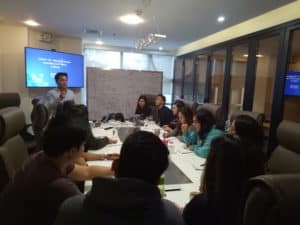The ‘Great Resignation’ Is Real, Here’s How To Survive It
Millions of people are leaving their jobs, and millions more may follow in the next months as life slowly goes back to normal. They call it “The Great Resignation of 2021,” a post-pandemic spectre haunting business of all sizes across industries. The trend is real, and we have numbers to prove it.
In April alone, a record-high 4 million people quit their jobs in the US. Meanwhile, in the UK and Ireland, a survey by HR software firm Personio showed 38% of workers are planning to resign in the next 6 months. Worse, a Microsoft poll also projects global attrition of 41% for the rest of 2021.
For many companies struggling to recover from the losses incurred at the height of the pandemic, a post-COVID resignation boom is the last thing they want to happen. But it is already upon us and experts are saying that it might linger for quite a while.
The Cost of Attrition
With new variants triggering surges of new cases in many parts of the world and a global talent shortage still at hand, the negative impact of the “Great Resignation” cannot be overstated, as the cost of attrition can cause devastating business setbacks.
Moreover, a recent study showed a majority of the people who resigned in the past year were mid-career workers. This is no joke as companies put a huge amount of time, effort, and investment in keeping their employees, and all of that could be gone in a snap to eventualities like the “Great Resignation.”
Just how much are you losing when you lose an employee? The estimated hard cost for replacing one employee with an average salary of $40,000 is around $104,000, encompassing the processes of separation, vacancy, and replacement.
RELATED READING: The Real Cost of Attrition
The financial aspect of attrition is just one, the other is the soft cost. Whenever an employee leaves, lost productivity and decreased capacity follows, which can be a death blow to a company struggling to keep their employees and their business alive at the same time.
COST BREAKDOWN OF EMPLOYEE TURNOVER
| HARD COSTS | + | SOFT COSTS |
|---|---|---|
|

Separation costs |
|
|

Vacancy costs |
|
|

Replacement costs |
|
Calculate your total turnover costs and try to put them on the scale of the “Great Resignation.”
Why Are People Resigning?
Management professor Anthony Klotz, the person who coined the term “Great Resignation,” says this global phenomenon is brought about by several observable trends and pent-up resignations from last year finally coming together to a tipping point.
Employees who were forced to stay amid the uncertainty at the height of the pandemic were able to reflect and re-assess their life, work, values, priorities, and passion. After over a year and as the economy opens again, these workers made a leap of faith.
“The pandemic brought us face-to-face with our own mortality. When we have those big existential thoughts, often we think about what we want to do with our lives. How we spent it before the pandemic, may not be how we want to spend our time after,” he said in a LinkedIn podcast.
A lot of these resignations were caused by some businesses trying to get some of their people to go back to the office. Many employees chose to quit rather than return to the office for work, refusing to give up the autonomy they gained when they worked remotely.
For now, Anthony still sees a lot of uncertainties for both the employers and employees. He observed lot of organisations have already started offering options to keep their people, including hybrid work arrangements. However, it is still unclear whether these options are permanent.
‘Great Resignation’ May Have Been A Long Time Coming
The thing with the “Great Resignation” is it may have actually planted its roots right under our noses long before the pandemic, said veteran human resource practitioner Vince Castano, who heads the People and Culture unit of Empata.
“Mass resignations is a common crisis way before COVID, and there are usually two culprits – poaching by competitors or bad management. Between the two, it is usually the latter. Like I always say, people leave their managers – not their roles, not the company, but their managers,” he explained.
Managers, he stressed, are the face of the organisation to the employee, in the same way that they are the face of the employees whenever they talk to the executives. The difference between a good manager and a great one is the capacity to tread this thin line.
The pandemic may have exacerbated the resignations, but Vince believes it may have been mitigated had organisations put the task of employee retention on a day-to-day basis. The good news is, he said, that it is not too late to look at some points of improvement to face the “Great Resignation.”
Building A Solid Culture & Relationship
When people talk about retention, culture-building is one that comes up frequently, but little is said about relationship-building despite the two going hand-and-hand together. Culture is something you set, while relationship is how you implement it. They must always be in sync.
“If the organisation says, ‘we are family oriented,’ it must reflect on the policies and how they treat the employees. It must be felt through and through, from daily communications, to celebrating milestones and even to the company’s salary and benefit packages,” Vince said.
Key to building a strong relationship with the employees is maintaining open communication channels, not just by way of messaging platforms but through events, like brown bag sessions and open forum where the staff can freely share their thoughts and express their personalities.
In the end, it is always about making the employee feel they belong to the company, not only by words but also in action. It may sound simple, but it takes a lot of hard work and getting to know from both the employer and employees to establish a great working culture, much like a typical relationship.
Read More: How to Foster a Productive Culture for Your Offshore Team
Empathy With Solutions
Most employees quit their job because they felt the management never gave the time and effort to understand what they are going through. Putting oneself in the shoes of the employees is crucial to understanding their needs and how the organisation can support and give them the best working experience possible.
However, it should not stop with empathy alone. The main point of empathising is to be able to provide a solution. By empthasing with the employee, managers gain their trust with some important aspects of their daily grind, may it be work or life related, which is important in providing solutions in case problems arise.
“It’s really about putting yourself in the employee’s situation first and being solutions-oriented second. After identifying the problem, you should offer a solution. Having too much empathy without solution will only result to the employee feeling bad about the company and good about the manager, which too is counterproductive,” Vince explained.
The “Great Resignation” only highlights how a lot of companies failed to show total care, empathy, and compassion to their employees during or even before the pandemic emerged.
Read More: Get Top Talent With Total Care
Providing A Clear Career Path
Growth and stability are two things closely tied with job satisfaction, as these are inherent human needs. People are not only looking for jobs, but they are also looking for new knowledge, new skills, and a clear career path that will let them maximise their potential.
“When we say job satisfaction what employees normally say is about growth in their work. When they find a job, the next thing they ask is what is in it for them. Will they be doing the same job for the next 2 years or will they be promoted? Will their work expand? Will they learn new skills?” Vince explained.
Growth is often misconstrued as something only for the new entries or for the younger generation of workers, but most mid-career workers resign because they feel that they have been stuck in their roles for a long time, with no growth ahead.
Having a solid career development plan for the roles you offer, which includes regular training, seminars, workshops, and new skills acquisition, is a great way to make your employees feel that you really want them to grow and move up the ladder.
Bridging Talent Gap Amid The ‘Great Resignation’
As people continue to quit their jobs, the talent gap in the market grows wider and wider. If the “Great Resignation” continues, it will be harder for companies to keep operations alive without significantly reducing the size of the business, but that is where offshoring can come in.
Emapta, a top offshore outsourcing firm based in Manila, offers access to premium talent in the Philippines with a complete suite of services for companies of all shapes and sizes, which comes at a very low rate for more savings.
From building, maintaining, and scaling teams, we help our partners achieve success by giving them total flexibility in handling their people. Our services and ultramodern workspaces are all built to let our partners have their way of integrating their culture into their teams.
With 14 offices located in key cities in the Philippines all backed by an enterprise-grade IT system, we make sure our partners can focus on their core operations without having to worry about the work of their teams in Manila.















